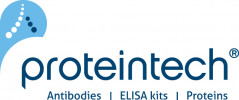© Pint of Science, 2025. All rights reserved.
Join us during Postdoc Appreciation Week as we celebrate our postdoctoral researchers at SEMS.
This event will showcase the significant contributions postdocs make to research, and attendees can enjoy refreshments and goodie bags provided by Proteintech.
#NPAW2023 #CelebratePostdocs @proteintech @pintofscience
This event will showcase the significant contributions postdocs make to research, and attendees can enjoy refreshments and goodie bags provided by Proteintech.
#NPAW2023 #CelebratePostdocs @proteintech @pintofscience
Can we recreate human knee joint tissues in the lab to help us understand Osteoarthritis?
Dr Timothy Hopkins
(Versus Arthritis Research Fellow)
Osteoarthritis (OA) is the most common joint disease in the world, affecting around 10% of men and 18% of women over 60 years of age. Despite its prevalence, and the significant associated economic and social burden, there are currently no disease-modifying treatments for OA. My research is focused on developing in vitro models of human musculoskeletal tissues to understand OA disease processes with a view to improve existing treatments and develop new ones. Most recently, I have been developing these models using ‘organ-on-a-chip’ technology.
Crosstalk between cell-matrix and cell-cell signaling in cardiomyocyte mechanosensing
Dr Emilie Marhuenda
(Postdoctoral Research Assistant )
Cardiomyocytes (CM) are mechanically coupled through cell-cell and cell matrix contacts in order to transduce force and coordinate the overall contraction of the heart. CMs are connected through intercalated discs (ICDs), implicated in mechanosensing and signalling, while extracellular matrix stiffness is sensed at integrin adhesions. We investigated the crosstalk between the cell-cell and cell-matrix adhesions, using FRET/FLIM tension sensors. We identify stiffness dependent changes to talin interactions at the costamere, as well as a previously unknown mechanosensing complex ICDs.
Map data © OpenStreetMap contributors.

